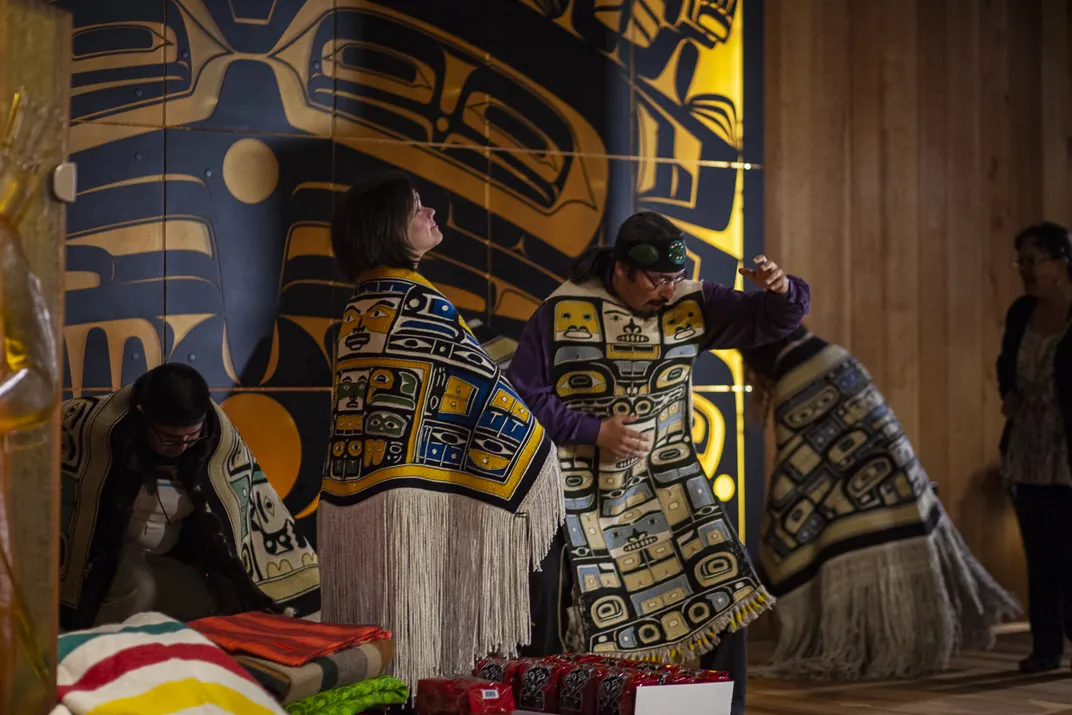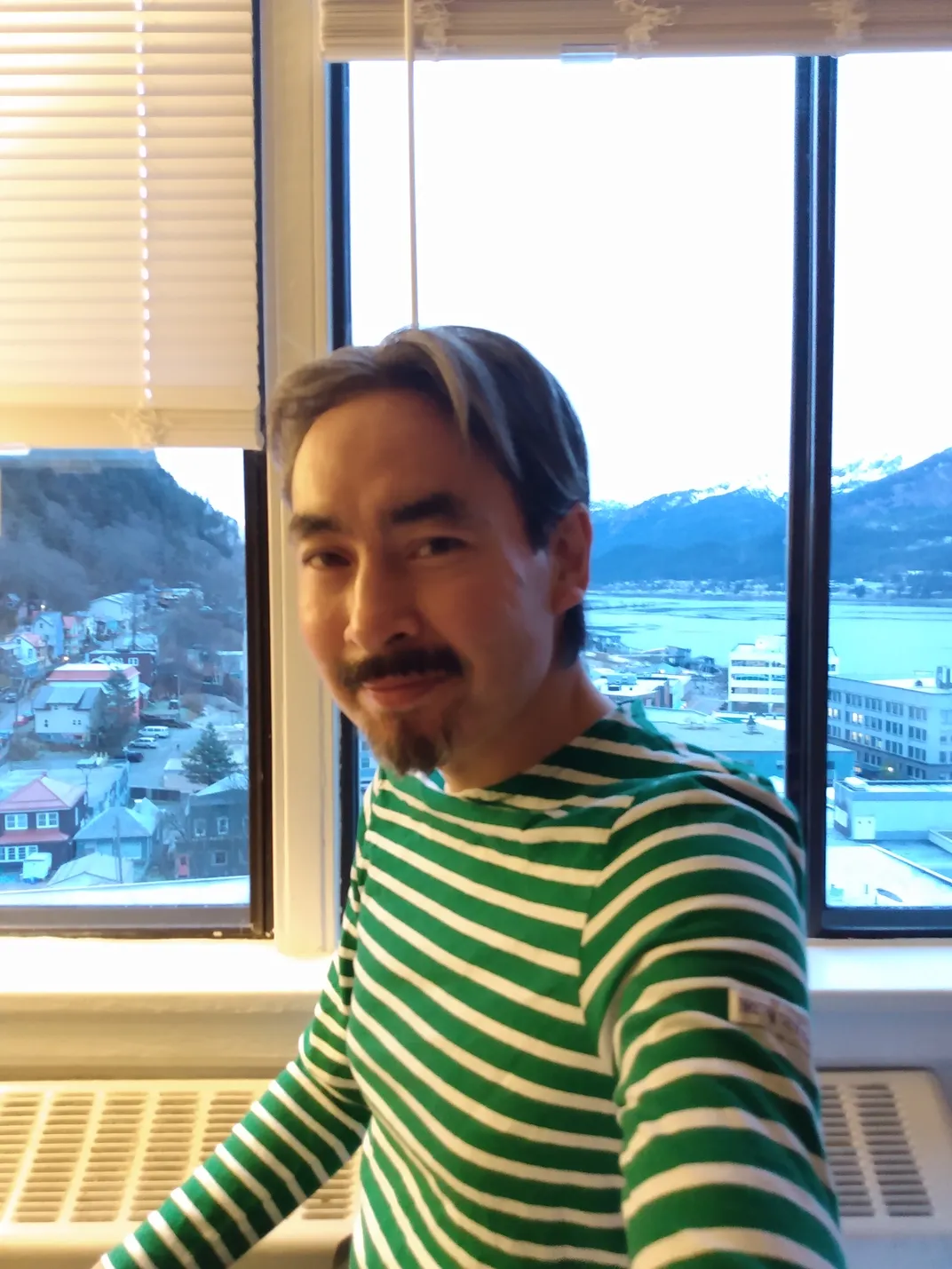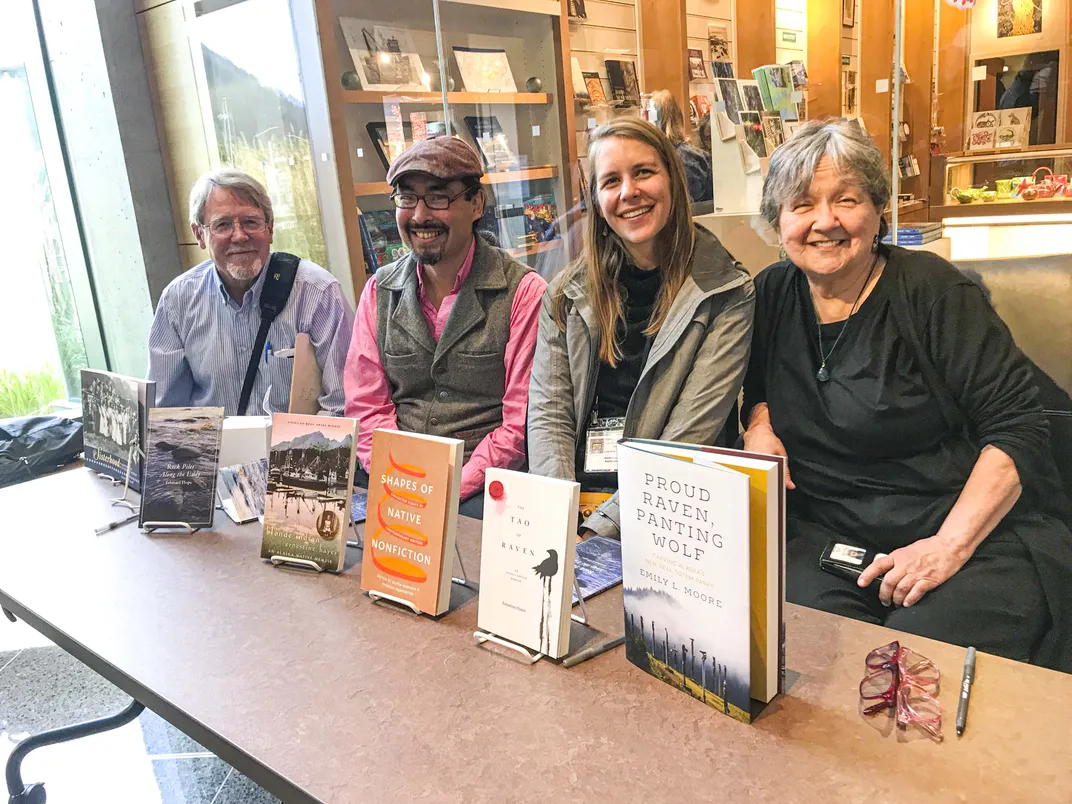NATIONAL MUSEUM OF THE AMERICAN INDIAN
National Poetry Month: An Interview With Alaskan Poet Ishmael Angaluuk Hope
Weaving words of Indigenous experiences with contemporary contemplation and intellect
:focal(750x500:751x501)/https://tf-cmsv2-smithsonianmag-media.s3.amazonaws.com/filer_public/10/31/10310278-00b0-4219-9e92-bb64014d6e51/alaskan_poet_2.jpeg)
Ishmael Angaluuk Hope (Tlingit name Khaagwáask') is a Tlingit and Inupiaq poet, Indigenous scholar, video game writer, film actor, and novelist. His current and upcoming projects include: "Walking Dead: Last Mile" (Skybound Entertainment), a video game for Facebook; "Likoodzí Shkalneek Áyá: The Stories of Robert Zuboff," edited with Matthew Spellberg and a team of translators and elders, to be published by Dumbarton Oaks; "Yéi Áyá Yax Shutaan: This is How It Ends," a Tlingit and English speculative fiction epic, for which he received a Rasmuson Foundation grant to write in the summer of 2022; and "The Dilettante," a novel. He received his BLA at the University of Alaska Southeast, and an MFA at the Institute of American Indian Arts. He lives in Dzantik'ihéeni (Juneau, Alaska).
Here is his most popular poetry piece:“Canoe Launching into the Gaslit Sea”
Now, as much as ever, and as always,
we need to band together, form
a lost tribe, scatter as one, burst
through rifle barrels guided
by the spider’s crosshairs. We need
to knit wool sweaters for our brother
sleeping under the freeway,
hand him our wallets and bathe
his feet in holy water. We need
to find our lost sister, last seen
hitchhiking Highway 16
or panhandling on the streets of Anchorage,
couch surfing with relatives in Victoria,
or kicking out her boyfriend
after a week of partying
in a trailer park in Salem, Oregon.
Now, as much as ever, and as always,
we need to register together,
lock arms at the front lines, brand
ourselves with mutant DNA strands,
atomic whirls and serial numbers
adding ourselves to the blacklist.
We need to speak in code, languages
the enemy can’t break, slingshot
garlic cloves and tortilla crumbs,
wear armor of lily pads and sandstone
carved into the stately faces of bears
and the faraway look of whitetail deer.
We need to run uphill with rickshaws,
play frisbee with trash lids, hold up
portraits of soldiers who never
made it home, organize a peace-in
on the walls of the Grand Canyon.
We need to stage earnest satirical plays,
hold debate contests with farm animals
at midnight, fall asleep on hammocks
hanging from busy traffic lights.
Now, as much as ever, and as always,
we need to prank call our senators,
take selfies with the authorities
at fundraisers we weren’t invited to,
kneel in prayer at burial grounds
crumbling under dynamite.
We need to rub salve on the belly
of our hearts, meditate on fault lines
as the earth quakes, dance in robes
with fringe that spits medicine, make
love on the eve of the disaster.

In the following interview, we invited Ishmael to share his background with us.
Can you give us your Native name and its English translation?
My Inupiaq name is Angaluuk. My main Tlingit name is Khaagwáask’. I don’t have a translation of those names. I have other Tlingit names, however, that I do have a translation for. One is Shis.hán, given to me by the Teeyhittaan clan, which means “Proud Walk of the Raven.” Another is X’aaká Xhei Uwaxhei, from my clanhouse, the Kiks.ádi, X’aaká Hít, which means “Sitting at the Point,” which is a point of land where the clanhouse resides. Finally, the Khak’weidí gave me a name, L’ee S’aatí, Blanket Master, for fun (but also in honor), because of my intense interest in buying blankets to give out during the Khu.éex’, the potlatch.
What Native communities are you affiliated with?
The Tlingit and Inupiaq are my main heritages. I’m also proud of my Tahltan heritage from a great-great grandfather, and going far back, Tsimshian.
How old were you when you became interested in poetry?
Both of my parents were poets, Andy Hope III, Xhaastánch, and Elizabeth “Sister” Goodwin Hope, Taliiraq. I’ve been interested in poetry for as long as I remember, mainly from influence from my parents. My mother in particular was deeply proud of being a poet. She was perhaps the first published poet of Inuit descent. Her book, A Lagoon Is In My Backyard, was warmly reviewed. My father was also a well-known poet in the region, and he was a literary builder, starting and leading many literary and academic conferences, running a small press, supporting fellow Native poets. They also read all the time. I appreciate the literary environment I grew up in, with many bookshelves filled with an eclectic mix of novels, poetry, history, music criticism, art books, and coffee tables stacked with newspapers and magazines such as The New Yorker, while NPR would be playing news or witty talk shows. We would watch television and movies, yet there was an intellectual atmosphere in the home. Additionally, my parents were deeply involved in their Native cultures. My mother told stories and was an Inupiaq dancer. My father was involved in Tlingit potlatches, and was very close to knowledgeable elders, whose stories he documented. Their example inspired me. I remember writing short poems and showing them to my grade school classmates and teacher, who all responded encouragingly.

Do you consider your art form Indigenous popular culture?
I work in many genres, ranging from genres Indigenous to my cultures, such as traditional storytelling and oratory in the Tlingit language and in English, to poetry, to video games, film, and theater. There is no “high” or “low” for me. It’s all good, all vital, all worthy crafts. For example, I just came back from a trip to a museum where a group of us Tlingit performed a ceremony to welcome back sacred objects. I spoke in Tlingit, in the traditional oral-literary form. I’m also writing a speculative fiction epic in Tlingit with an English translation, a scholarly chapter for a book on Tlingit art, a novel in English, and I’m a part of a writing team for a Walking Dead video game called Walking Dead: Last Mile. It’s all a part of a continuum, while my focus remains on rich and rigorous craft, making good art.
How does your work coincide with traditional Native art forms?
As I share above, I tell traditional stories and share oratory in Tlingit, while I share a few Inupiaq stories as well. I participate in the Khu.éex’, the Tlingit potlatch. I have spent a lot of time with Elders. Scholars and poets Nora and Richard Dauenhauer, who published many books of Tlingit oral literature, called our Elders “deeply intellectual.” Willie Marks, Nora’s father, was a clan leader and a great storyteller and oratory. He also played the Hawaiian guitar. I consider my work a part of the same kind of continuum.

Is there any advice you can give to young Native poets?
Read as much great literature as you can. Read every day. Read the great oral literature, such as stories by Catherine Attla, Robert Nasruk Cleveland, Anna Nelson Harry, Paul John, Hanc’ibyjim, Joe Neil MacNeil, Avdo Međedović. Read the great writers, like Neruda, Lorca, Johann Wolfgang von Goethe, Fyodor Dostoevsky, Lucy Tapahonso, Joy Harjo, Chrétian de Troyes, Ivan Turgenev, Nora Dauenhauer, Richard Dauenhauer, Euripides, Sophocles, Aeschylus, Virgil, Wallace Stevens, George Sand, Robert Bringhurst, Dante Alighieri. Start a literary journal. Write reviews of poets in your region. Read and celebrate the work of your literary colleagues. Write in a notebook what you want to achieve in your writing and your career. Write letters to loved ones and dear colleagues. Study biographies of writers and artists you admire. Go on walks and do some form of resistance training. Learn your Native language. Study the forms of poetry, including your own Indigenous forms.
Where can we find more of your poetry?
The above-noted anthologies, and my second poetry collection, Rock Piles Along the Eddy, is available for purchase online, or you can email me directly to order a copy, at [email protected].
Also currently on exhibition in the mall museum is:
Preston Singletary: Raven and the Box of Daylight
January 28, 2022–January 29, 2023
Washington, DC
Third Level
Preston Singletary: Raven and the Box of Daylight features works from internationally acclaimed artist Preston Singletary (Tlingit American, b. 1963), and tells the story of Raven, the creator of the world and giver of the stars, moon, and sun.
Through an immersive, multisensory experience, Raven takes visitors on a journey of the transformation of darkness into light. In addition to Singletary's striking glass pieces, the exhibition features storytelling paired with original music, coastal Pacific Northwest soundscapes, and projected images.
